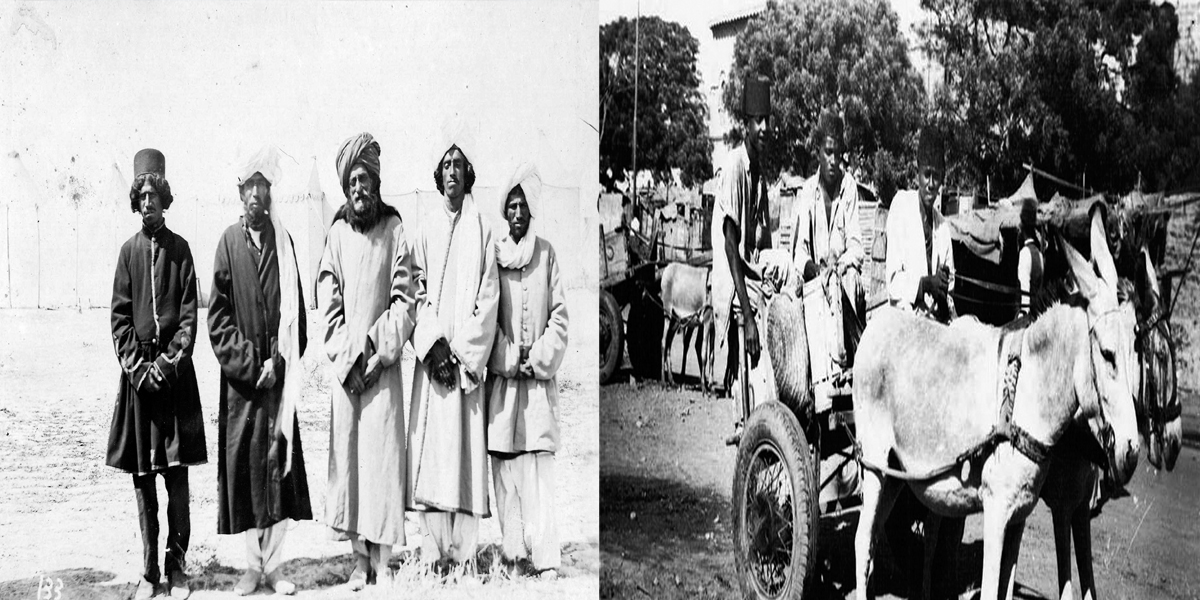People of southern Balochistan particularly the people of Makran migrated to various parts of Sindh including Karachi in the 19th century primarily due to famine and oppressive rule of tribal chiefs, writes Essa Khan Baloch in his book “Baloch Naye Zindagi Kì Talash Mein”.
The book whose title may be translated as “Baloch in search of a new life” sheds light on the life of the common people of Makran in the 19th and early 20th century. The people of the areas, it says, were oppressed by the Gichki chieftains loyal to the British Empire.
Gichki is a Baloch tribe which mostly lives in the Makran. It ruled the region from 1740 till 1974 and owned lands from Kech to Panjgur districts. According to the book, imposition of a heavy tax by the Khan of Kalat had also made the lives of the people difficult.
“This oppression resulted in a rebellion of farmers and herders. However, two tribal chiefs – Sardar Mehrab Khan Gichki and Mir Baloch Khan Nausherwani – also supported the commoners.”
According to the Baluchistan District Gazetteer Series – published in 1907 – Sardar Mehrab was the prime-mover in the revolt. He led the attack on the Nazim – Diwan Udho Dass – on the morning of January 6, 1898 and took him hostage while also taking over the Turbat fort.
“The Nazim was eventually released and sought refuge at Kalatuk. Mehrab Khan next communicated with his brother, Mir Rustam Khan, who was in charge of the escort with a survey party working in the Kolwa hills under Captain Burn.
“Rustam Khan and Mir Baloch Khan Nausherwani made an attack on the camp which resulted in some men of the party being killed and a large quantity of [British] government property being lost.”
The gazette series said small parties of rebels moved in the direction of the sea coast, reached Pasni, and destroyed much of the telegraph line laid by the British between Pasni and Gwadar.
In order to quell the rebellion, the British dispatched a column from Karachi under Colonel Mayne consisting of 400 Infantry and two guns.
“The rebels had a decisive battle with a column of the British army in 1898 at Gokprosh, south of Turbat, and both the rebel leaders were martyred along with 200 farmers and shepherds,” says the book by Essa Khan Baloch.
Famine – which is called Dhakar in Balochi – used to occur in Balochistan after every four year. During the drought, the people of the southern Balochistan used to cook rind and leaves of trees and drank water from ponds.
The people also used to catch grasshoppers during locust swarms. They would boil the insect; sun-dry it and consume it during these famines. It was due to this scarcity of food and the taxes imposed by the tribal chiefs that people of Makran began to move to Sindh including Karachi.
The book claims that this migration was not easy as the tribal chiefs tried to stop people from moving from their native places. They sometimes even pursued their farmers up to the ports of Gwadar and Chabahar and Jask – the latter two located in Iran.
The tribal chief also went after the people over land routes. The book narrates the story of a woman from a chieftain’s family reaching Lyari area of Karachi in pursuit of her slaves and meeting her end at the hands of the fugitives.
The second census to be held in Sindh during British rule in 1856 showed that the population of the province had increased by 80% in five years. According to the census, the population of Sindh was 1,772,367 while the population of Karachi was 48, 421.
Most of the people migrating from Makran had settled in Lyari and Malir areas of Karachi, which was then a small but beautiful city mostly inhabited by rich Hindu and Parsi people.
Facing prejudice
The people migrating from Makran to Karachi still live in one of the most backward areas of the metropolis including Lyari and Malir.
Lyari, once regarded as a stronghold of the Pakistan Peoples Party (PPP), has suffered for decades at the hands of drug mafias which briefly established their virtual rule over the area during the PPP rule from 2008 till 2013. However, Lyari is now a peaceful area, producing the finest athletes of the country.

















